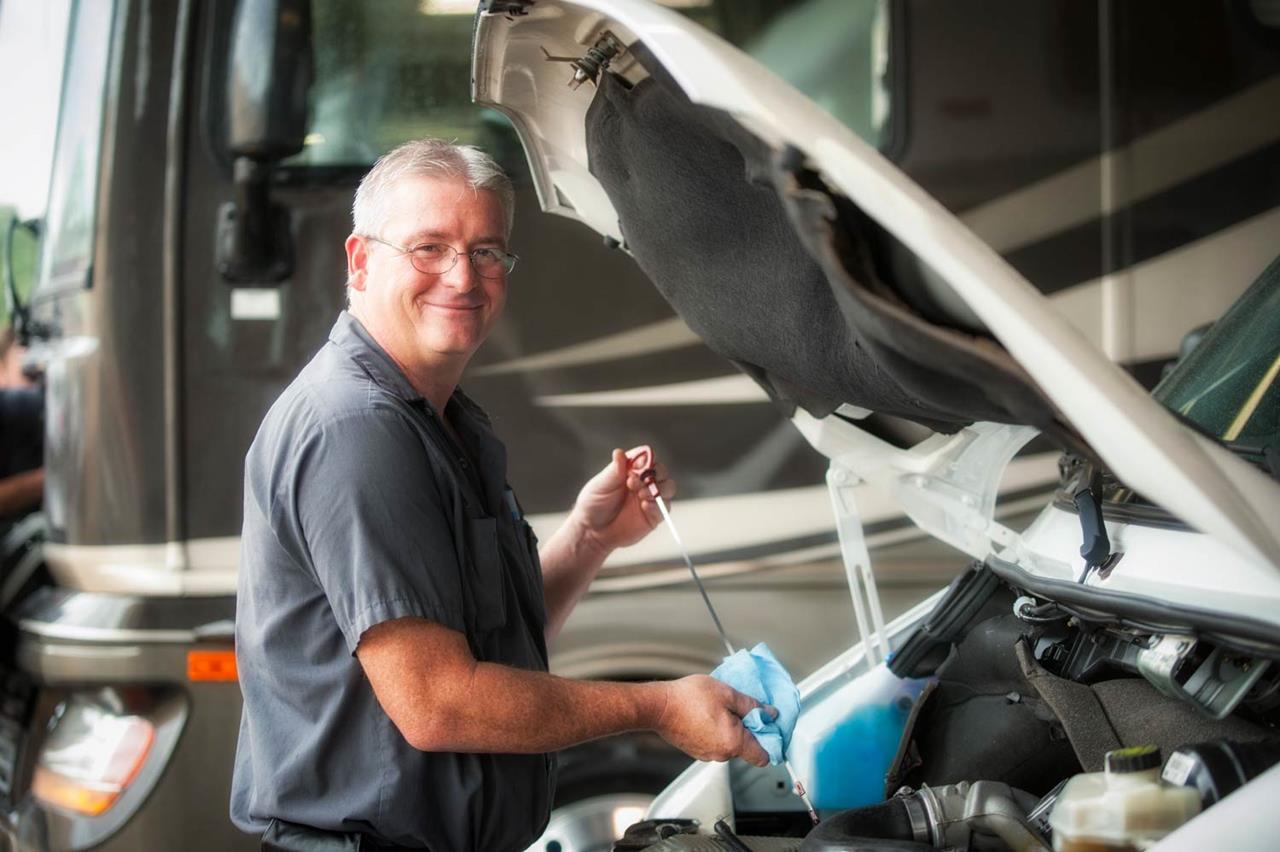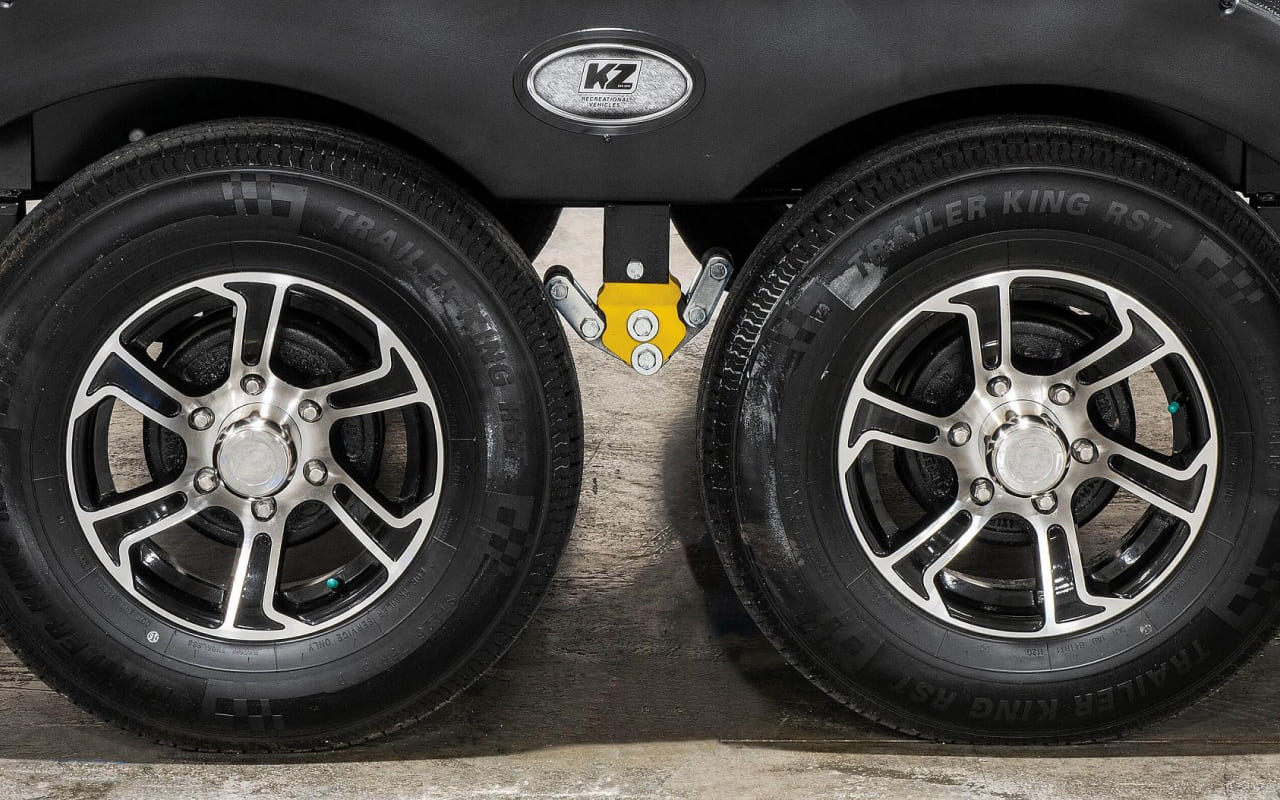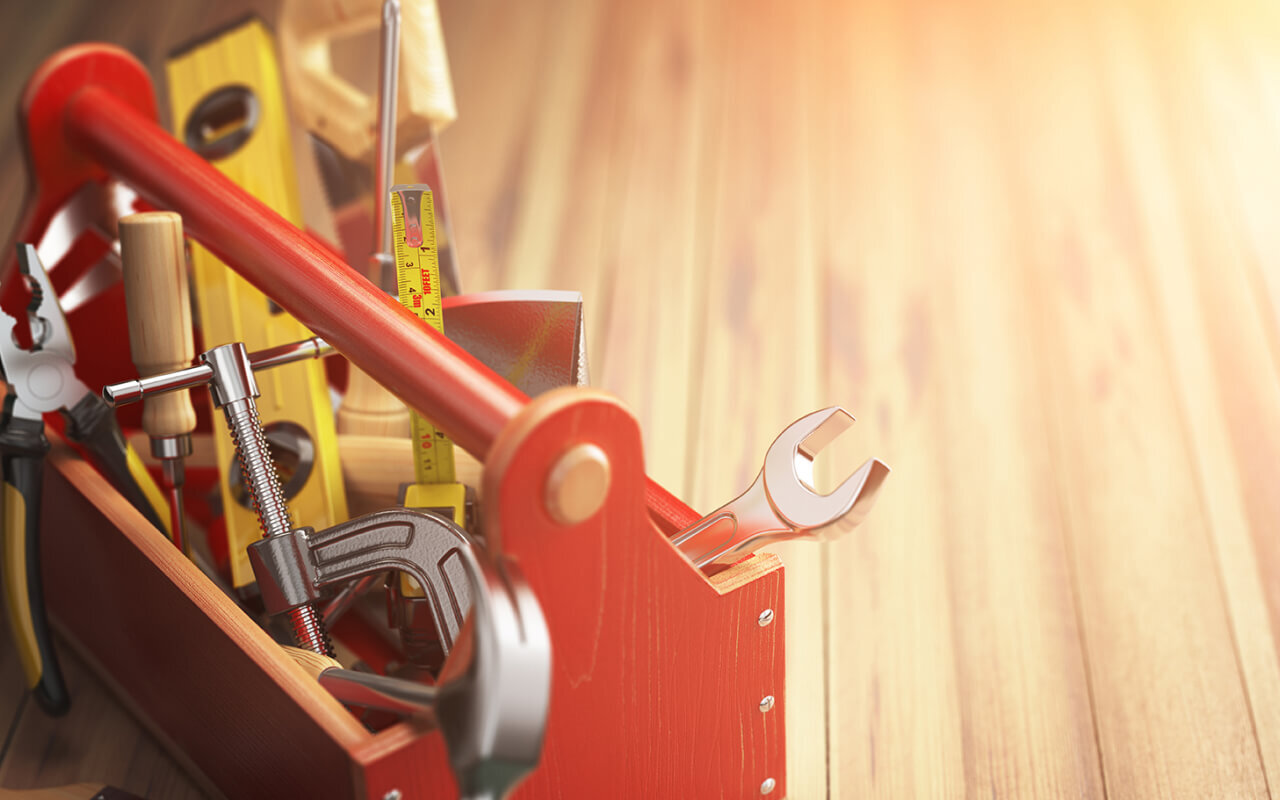
As an RVer, you’re doing car and home maintenance all at once. While routine RV maintenance might seem like a drag, it’s a fantastic way to learn more about your RV and helps ensure you’re getting the most out of every RV trip you take.
When it comes to keeping your RV in top condition, there are several different kinds of services and checklists owners should follow throughout the year. There’s a checklist you should follow before every trip and one for the summer and winter. Besides these important checklists, there are a few key quick and easy checks that RVers can perform every month. Check 10 monthly maintenance tips for RVers from the RV service experts at Lazydays RV!
1: Check the water levels of your batteries
Since most RVs use lead-acid batteries, maintaining the optimal water level in each battery is key to their performance and longevity. Lead-acid batteries generate a charge by heating an electrolyte solution composed of sulfuric acid and water. If you’re a full-time RVer and leave the RV plugged in constantly, or use it often throughout the year, check the battery water level every month and before every trip. When a battery is underwatered, sulfation occurs where sulfate crystals form over the active charging plate. This can cause irreparable damage to the battery. Batteries can also be overwatered, resulting in reduced performance and corrosion that can damage the battery and surrounding housing. If you’re nervous about working on your RV batteries, take your RV into a Lazydays RV dealer or service center near you and our experienced technicians are happy to help!
2: Run the generator
The only thing more annoying than having your RV’s batteries die in the middle of a trip is having your generator quit working, especially during a boondocking trip. Running your generator every month is vital no matter if your RV is in storage for the winter or if you’re actively using it.
The main reason to run your generator every month is to prevent the fuel from breaking down. Gasoline, on average, has a storage life of around one month. If it lies dormant for too long, the chemical components can break down and damage the internal systems of your generator. We recommend running your generator around two hours per month at half power. If you’re in the middle of a busy travel season and are using your generator regularly, you will likely be alright. If you’re RV is in storage, this is a must along with running your engine (if you do not have an empty tank or some type of fuel preservative in it). If you have any questions about your RV’s generator, contact us today and check out a few RV generator maintenance tips.
3: Inspect the roof
Throughout the year, your RV’s roof goes through a lot. In the summer, it battles the hot rays of the sun and keeps you dry from the rain. In the winter, it battles snow, sleet, hail, rain and other elements. Regularly inspecting your RV’s roof can keep maintenance costs down and prevent an unnecessary mid-trip pit stop to a service center. If you are storing your RV for the winter, we highly recommend using an RV cover, even if it is being stored inside. A cover adds a secondary, secure layer of protection between your RV and the elements. If you’re RV is not under a cover, give the roof a thorough inspection every month and/or before every trip. Make sure there aren’t any punctures or leaks in the roof, the AC unit is clean and unobstructed, the paint is in good condition and that any large debris is removed. This and other basic roof maintenance checks will have your RV ready for the road year-round!
4: Wash your RV
Just like your car or home, you want your RV to look shiny and brand new all year. Giving your RV’s exterior a full wash every month or after every trip is a great way to keep it in top condition. One of the key reasons why owners should regularly wash their RV is to prevent any damage to the pain. Repainting your RV can be costly and if you are looking to sell or trade-in your RV, damaged paint can bring the value down. Before washing the outside of your RV, check your owner’s manual for what types of brush and soap you should use. If you do have any paint damage, need a new coat of wax or want a new component to match your RV’s paint scheme, Lazydays offers comprehensive RV paint repair services.
5: Check your RV for any leaks in the plumbing
Include this in any routine check throughout your RV, leaks can cause any number of problems while on the road. A leak in your sink piping can lead to mold buildup in your RV’s kitchen, while a leak in the freshwater line can drastically reduce your supply of drinking water on the road. This check is especially necessary after a road trip. Rocks and other debris can kick up into the undercarriage of your RV and spring a leak.
6: Inspect seams and seals to make sure they’re waterproof
Like a leak check, inspecting the seams and seals throughout your RV can be factored into a roof, plumbing or other routine pre-trip inspection. This is especially important along your roof and windshield, which are two areas that handle a good deal of moisture. A damaged roof seal, for example, can result in mold building up in the gap between the exterior and interior of your RV, which sometimes goes unnoticed for months. If you notice any damage to your RV’s roof, window or windshield seals that is too extensive for you to handle, Lazydays offers several windshield and roof service packages for customers to choose from.
7: Dust and vacuum your RV’s interior
How often you dust and vacuum your RV’s interior is another task that is dependent on how often you’re using your RV throughout the year. If you are storing it for the winter or a different extended period, give the inside of your RV a thorough cleaning before storing it and after taking it out. During a period of active use, at the bare minimum, dust, and vacuum the interior of your RV at least once per month and/or after every trip. Dust, dirt, spills and other things happen over the course of an RV trip and the last thing you want to do is let them build up. Having a tiny, handheld vacuum on hand is a great way to deal with dust and other spills during the trip as well.
8: Sanitize the freshwater tank
RVers should sanitize their freshwater, black water and galley tank at least once per month, and especially after every RV trip. Check your RV owners’ manual to determine what type of sanitation chemicals are recommended for each tank in your RV. To help your sewer tank run effectively, use biodegradable toilet paper to avoid the build-up of excess solids. Sanitizing the freshwater tank is critical after your RV has been in winter storage since antifreeze was used to keep the tank from freezing over the storage period.
9: Check voltages
A quick and easy item to add to your routine service checklist, use a multimeter or circuit tester to check the voltage on critical systems throughout your RV. The batteries, shore power and generator are three high priority systems, but it doesn’t hurt to check interior lights and other electrical systems you often use during a trip. For more information on RV voltage systems, check out our handy guide featuring tips from Lazydays RV master-certified technician Mark Smith!
10: Inspect all interior and exterior lights
Finally, a quick inspection of all interior and exterior lights on your RV is a quick way to avoid any last-minute trips to the store before your next RV trip. This can be done in as little as five minutes and should be done before every trip and every month during a storage period while you’re running the generator. Make sure to not forget your awning, overhead range and bathroom lights!
If you need additional maintenance on your RV or feel more comfortable having a professional handle your RV maintenance, schedule an appointment at your nearest Lazydays location today! If you’re in the Houston area or plan on taking an RV trip through Texas, our brand-new Houston Service Center features 20 RV service bays and a team of exceptional, experienced RV technicians. Lazydays blog is your go-to source for RV service tips, travel ideas, must-have accessory guides and more!



